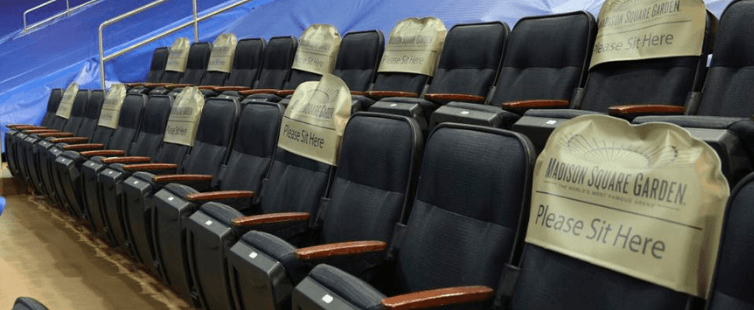Venues Begin to Show Signs of Life

As sports and entertainment venues, movie theaters and theme parks begin to re-open, will the passion return?
With all venues re-opening with limited capacity and strict COVID-19 requirements including testing and wearing face masks, it’s a question of whether fans will return with the same fervor and importantly, at least for the licensing community, whether they will buy licensed merchandise. More broadly, will the cheers of even a couple of thousand people in a 20,000-seat venue create an atmosphere that approaches the excitement and connection that drives even homebound fans to purchase team gear?
Limitations continue
For example, Madison Square Garden in New York opened for a Knicks game Tuesday at 10% capacity, joining a limited number of arenas in other states that are allowing limited attendance for sports and other events. And theaters will re-open in New York on March 5 with 25% capacity after being closed for nearly a year. And most theme parks, for the time being will be limited to 25%. With the capacity limits, the cost of buying for and stocking and staffing concession stands with merchandise brings into question whether it makes fiscal sense to re-open them.
“We are making plans as if we are going back to a stadium full of fans; I think that is the only thing you can do at this point,” says Rick Van Brimmer, Assistant Vice President for Business Advancement, Trademark & Affinity Management at The Ohio State University. “You are hedging your bets and prepared to alter your course very quickly. The real question is how many people sat out last year and feel they’re fine with not going back” to a stadium. “It can be nice grilling outside and not packing up the car. You won’t get the stadium experience, but how many of our season ticket holders may have changed their minds?”
That’s the question lingering across all forms of in-person entertainment:
- Movie Theaters. Stock prices of cinema operators rallied this week, largely on news that theaters in New York will re-open with limited capacity in March. To be fair, movie theaters have been open to limited audiences across much of the U.S. for several months. But New York, which has been closed to theaters for nearly a year, is a major moviegoing market. Reopening theaters there gives film distributors confidence to set and hold to theatrical releases, the slipping of which has plagued the licensing industry for much of the past year. But even with New York joining the list, the National Association of Theatre Owners (NATO) maintained that 25% capacity is “problematic” for theater operators with luxury-recliner seating.
Globally, there is a nearly even split among countries in which cinemas are open and those where they are closed. Throughout the Middle East most theaters are open and the same holds true for Asia with the exception of South Korea where they are closed. Throughout Europe, most are closed, with those in the UK currently scheduled to open May 17, but no re-opening dates set for Germany or France. Some European countries (Poland, Finland and Spain) have opened them on a regional basis. - Sports and Entertainment Venues. With many having opened only this week with limited capacity – in New York, it’s 10% for arenas with seating for 10,000 or more — projecting how the rest of the year will play out makes forecasting nearly impossible.
For example, many sports licensing companies are hedging their bets in relying more on “chasing” inventory rather than pre-orders. To be sure that trend has been in the works for several years but was accelerated by the pandemic. Where pre-orders were once 60% of a licensee’s business, with chasing being the remainder, the latter now represents nearly 70% of revenue for a couple of brand owners. (No matter where in the world, a pattern like that could have significant implications for manufacturing, moving production much closer to the market in which the finished goods are sold.)
The result can be potentially lower revenue from licensing, says Matt Curran, Senior Vice President for Administration, Trademarks and Contract Compliance at the University of Southern California. “There is more risk involved now,” says Curran. - Theme parks. About 40 parks in the U.S. have announced re-opening plans for 2021, but with capacity limits and safety protocols. Hong Kong Disneyland re-opened on Feb. 19 for a third time – it re-opened and closed twice last year – on a five-day a week schedule (closed on Tuesdays and Thursdays. Disneyland Paris was open July 15-Oct. 29 before closing and is scheduled to return to business on April 2. Disneyland in California remains closed, while Disney World has been open with restrictions since July 15. Six Flags Entertainment also has set a schedule for gradually re-opening its 26 parks across the U.S., Canada and Mexico starting in March. And Cedar Fair Entertainment is returning to operation starting May 8 with Kings Island near Cincinnati, OH.




